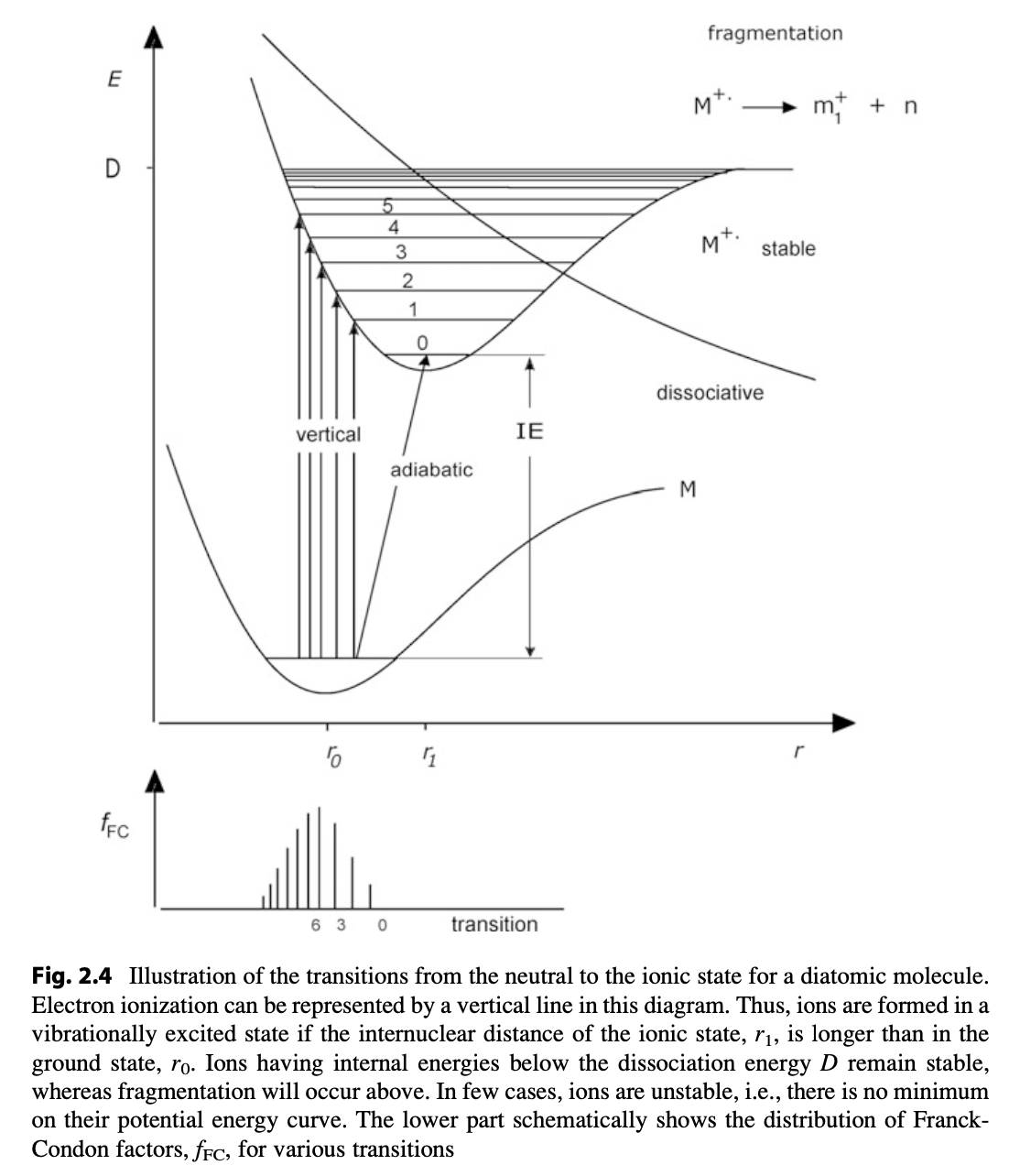I am currently studying Mass Spectrometry: A Textbook, third edition, by Jürgen H. Gross. On page 41, the author says the following:
As explained by the Franck-Condon diagram, hardly any molecular ions will be generated in their vibrational ground state. Instead, the majority of the ions created by EI is vibrationally excited and many of them are well above the dissociation energy level, the source of this energy being the 70 eV electrons.
On page 37, the author presented the following Franck-Condon diagram:
In this diagram, the energy is plotted on the ordinate, and the bond length is plotted on the abscissa.
My understanding is that the vertical transitions represent the electron ionization of the neutral $M$.
Following this diagram, on page 38 the author said the following:
The counterpart of the vertical ionization is a process where ionization of the neutral in its vibrational ground state would yield the radical ion also in its vibrational ground state, i.e., the $(0 \leftarrow 0)$ transition. This is termed adiabatic ionization and should be represented by a diagonal line in the diagram. The difference $IE_{\text{vert}} - IE_{\text{as}}$ can lead to errors in ionization energies in the order of 0.1 - 0.7 eV.
So, If i'm correctly interpreting the description below the Franck-Condon diagram, the only way for the molecular ions to be generated in their vibrationally ground state is if the bond lengths of the molecular ion in its ground state somehow end up being larger than the bond lengths of the molecular ion in its vibrationally excited state?
If my interpretation so far is correct, then two related questions immediately follow:
Why is it unusual (as it seems to be implicitly implied) that the bond lengths of the molecular ion in its ground state somehow end up being larger than the bond lengths of the molecular ion in its vibrationally excited state?
How does a situation arise where the bond lengths between such molecular ions differ so significantly that some end up in a vibrationally excited state and others in a vibrationally ground state? (If I had to give an educated guess, I would say that this is just due to random or non-primary factors.)
I'm studying this from a non-chemistry background, so I'd appreciate it if people would please take the time to explain this in a more novice-friendly way.



